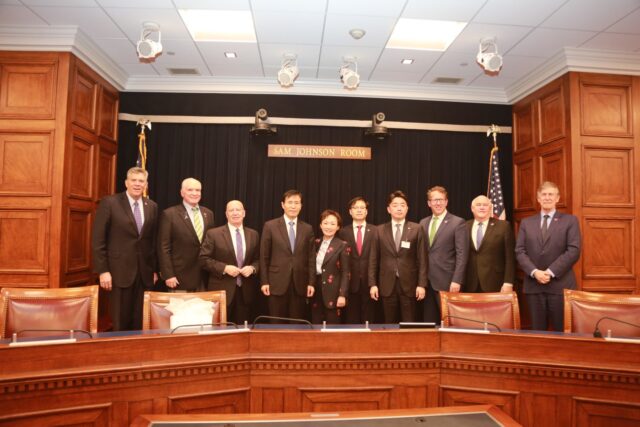The United States of America and South Korea entered into the FTA on March 15th, 2012. At its onset, the agreement was taken as a wide-scoped opportunity to address economic tensions in the USA-South Korea relationship, to expand potential commercial opportunities and to strengthen ties between the two allies.
Two months after the U.S.-Korea trade agreement entered into action on March 15, 2012, on May 16th, 2012, the United States Trade Representative Ron Kirk chaired the first meeting of the agreement’s Joint Committee, along with his Korean counterpart, Minister for Trade Bark Tahoe. At the first meet, they joined in the positive affirmation that the agreement is being implemented very smoothly and “is already leading to economic benefits for both countries.” Ambassador Kirk also remarked, “This landmark agreement is already resulting in economic benefits through increased exports. We are working closely with our partners in Korea to ensure that the agreement is being smoothly implemented.”
The KORUS FTA is America’s second-largest trade pact by the flow of trade after the United States-Mexico-Canada Agreement. The FTA started with $6.5 billion in exports has today risen to $20 billion. The U.S. goods and services trade with South Korea totalled an estimated $168.6 billion in the year 2019.
In these 10 years, the bilateral trade between the USA and South Korea has expanded nearly 70% with further enhancement of the investment facilitation in the framework of the agreement. In the year 2019, South Korea was the sixth-largest goods trading partner with $134 billion in total. The FTA, besides benefitting the traders and entrepreneurs involved in the import-export industry has also been beneficial to the farmers. This is because foreign direct investment has increased markedly with the stock of South Korean investment in America, tripling approximately to more than $50 billion.
The 2022 Trade Policy Agenda and 2021 Annual Report points out:
“Korea is a valued trading partner and a close ally. The United States-Korea Free Trade Agreement (KORUS) continues to be both a reflection of that close relationship and the foundation upon which we can build to make it even more cooperative. Going forward, we are committed to working with Korea to address our shared concerns, such as supply chain challenges, sustainable trade, emerging technologies, the digital economy, and trade facilitation.”
After analysing the latent objective, South Korea can prove to be one of the most reliable anchors for America to deal with many common challenges. The notable free-market democracy in the past years has demonstrated its sheer willingness to work with the U.S. for achieving the common goals.
Dynamic trade and activities related to investment through the agreement have deepened and widened the economic perspective of the South Korea-USA relationship over the past 10 years. With the recent presidential elections in South Korea, the FTA scenario is likely to improve as President Yoon of South Korea and President Biden of America are looking into the future with their primary focus being the elevation of bilateral ties.
Seizing the opportunity of South Korean presidential elections, celebrating the 10th anniversary of the KORUS FTA sounds fulfilling and promising.









